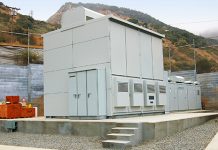John Petersen
Bartenders are smarter than most investors because they know what dilution is and they never get it wrong. Unfortunately, the markets have made such a bogeyman out of the word ‘dilution‘ that public companies often suffer extreme backlash from financing transactions that should have existing stockholders on their feet and dancing in the aisles.
Today I’ll try to clear up some of the profound confusion that runs rampant in the minds of retail investors.
Every bartender knows you can’t dilute a beer by adding a shot of whiskey. The boilermaker is always stronger. The same is usually true when a public company sells new stock for cash. The company is stronger and better funded after the transaction than it was beforehand. Frequently, however, the existing stockholders recoil in terror from a vague threat of dilution and bail out instead of celebrating.
For astute investors, these are great buying opportunities.
Most readers know I’m rarely bullish about A123 Systems (AONE), or for that matter any pure-play lithium-ion battery developer. Since I believe that it’s critically important for my readers to understand what dilution is, I’ve decided to break away from tradition, jump to A123’s defense, and explain why A123 is a far better risk today than it’s ever been.
Every IPO prospectus is filled with dire warnings of dilution because IPO investors always pay a price per share that’s higher than the book value of the stock owned by the pre-IPO stockholders. In A123’s IPO, its pre-offering book value was $2.34 per share, the IPO investors paid $13.50, and its post-IPO book value was $5.13 per share. Investors who bought stock in the IPO were the whiskey and they suffered dilution of $8.27 per share. The pre-offering stockholders, on the other hand, were the beer and the book value of their shares increased by $2.79 each through the magic of corporate finance.
During its first 15 months of operations A123 suffered a series of expected operating losses and by December 31, 2010, the summary year-end balance sheet in its Form 10-K looked like this:
| (thousands) | |
| Cash and equivalents | $ 216,841 |
| Working capital | 191,892 |
| Total assets | 576,158 |
| Long-term debt | 9,982 |
| Capital lease obligations | 20,226 |
| Stockholders’ equity | 398,198 |
On March 28, 2011, after its stock closed at $7.82 for the day, A123 announced concurrent underwritten public offerings for $125 million in convertible debentures and 18 million shares of common stock. The stock price fell to $6.35 per share within three days because somebody somewhere whispered the word dilution and the stockholders went into a panic.
On the morning of April 1st, A123 announced that the stock offering would be priced at $6 per share and the debentures would be convertible at $7.20. Both offerings were well received and A123 ultimately sold 20,184,067 shares of common stock and $143.75 million in debentures. The net cash proceeds of the offerings were $253.9 million. After giving effect to the offering proceeds, a pro forma summary year-end balance sheet would have looked like this:
| (thousands) | |
| Cash and equivalents | $ 515,741 |
| Working capital | 445,792 |
| Total assets | 830,058 |
| Long-term debt | 9,982 |
| Capital lease obligations | 20,226 |
| Convertible subordinated debentures | 143,750 |
| Stockholders’ equity | 508,348 |
At December 31, 2010, each of A123’s common shares had a book value of $3.77. After giving pro forma effect to the offering each of A123’s common shares had a book value of $4.04. Just like we saw in the IPO, the new investors were the whiskey and they suffered dilution of $1.96 per share while the pre-offering shareholders were the beer and the book value of their shares increased by $0.27 through the magic of corporate finance. If you take the analysis a step further and assume the debentures will ultimately be converted, the value accretion to the old shareholders will be closer to $0.70 per share. More importantly A123 is now in a position where it has plenty of cash to complete the build out of its facilities and pursue the development of its business. I thought it was a masterful piece of corporate finance work.
The stock market, however, interpreted the facts differently. As soon as retail investors began reacting to the dilution bogeyman the stock price tanked. Over the next two weeks the market price of A123’s stock plunged to a post-offering low of $5.29. It finally broke back up through the $6 threshold on Tuesday.
The easiest way to prove the silliness of the over-reaction is to note that A123’s market capitalization was $826.4 million at the close of business on March 28th. The offering added $253.9 million in cash and $110.2 million in stockholders’ equity to its balance sheet. Because of the market’s over-reaction, its current market capitalization is $766.5 million.
At the end of last year A123 had some serious financial weaknesses that jeopardized its ability to finance ongoing losses and continue its planned expansion. The offering obliterated those weaknesses and left A123 in a very strong position. If its stock was fairly priced prior to the offering, the post offering market capitalization should be at least $936.7 million ($826.4 million in pre-offering market capitalization plus $110.2 in additional stockholders equity), or $7.44 per share.
A123 has a first quarter conference call scheduled for May 9th and I won’t be surprised if its revenues and earnings fall short of expectations, but if you liked A123 Systems at $7.82 you should love it in the $6.00 range.
It’s a far better investment today than it was a month ago.
Disclosure: None.








